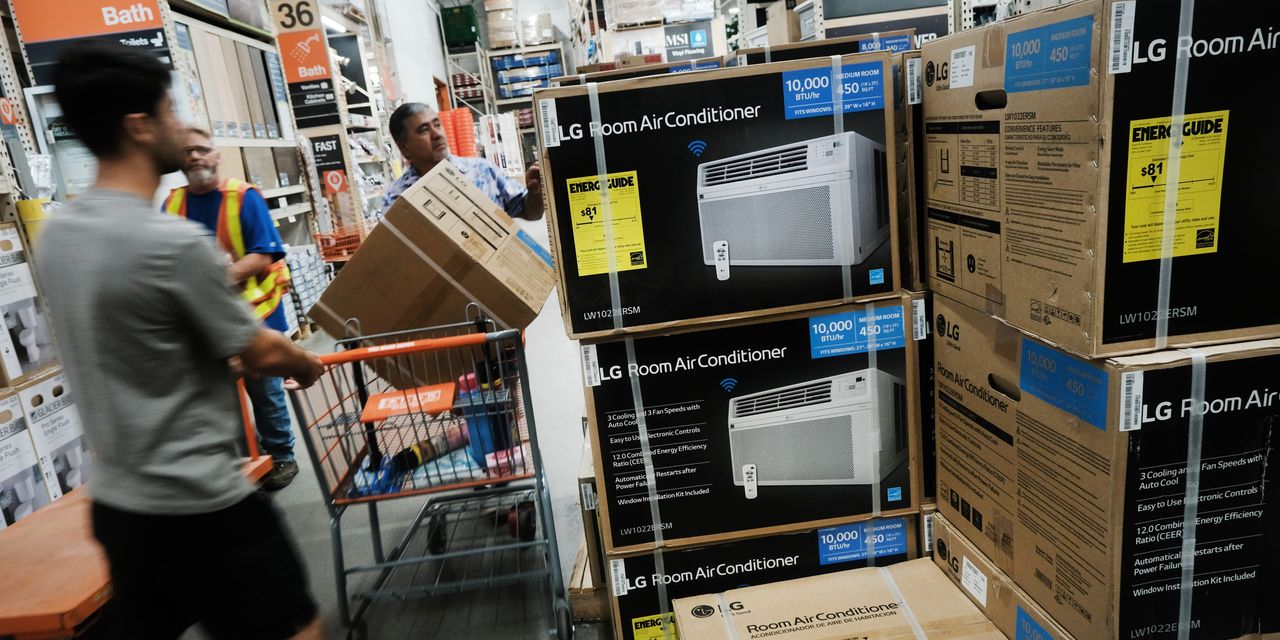Retail sales increased at a faster clip than expected in July as consumers splurged on summer deals.
Retail sales rose by 0.7% to $696.4 billion in July, ahead of economists’ expectations for a 0.4% increase, according to data from the Census Bureau. It also marked an acceleration from June’s 0.3% increase, which was revised from 0.2%.
Sales in the so-called retail sales control group, which excludes cars, gasoline, building materials and food services and feeds into the calculation of gross domestic product, surged 1% from June. While it was the strongest monthly gain since January, some elements of the report suggest consumers could soon begin to pull back.
Markets fell following the hotter-than-expected report, largely because “this is a situation when good news really is bad news,” said Quincy Krosby, chief global strategist for LPL Financial. While the Federal Reserve has been trying to rein in consumer demand by raising interest rates for more than a year, Tuesday’s report, coupled with a modest increase in inflation in June, suggests that there is still work to be done.
“This robust increase won’t comfort Fed officials and keeps the risk of tighter monetary policy very much on the table,” wrote Oren Klachkin, lead U.S. economist at Oxford Economics. “Fed Chair Powell will likely strike a hawkish tone at the Jackson Hole Economic Symposium next week.”
The
S&P 500
dropped 0.9%, the
Dow Jones Industrial Average
fell 0.9% and the
Nasdaq Composite
was off 0.8% in early trading.
E-commerce was a bright spot in the sales report, said Ted Rossman, senior industry analyst at Bankrate. Sales at nonstore retailers, which encompass e-commerce vendors, were up 1.9% month over month, and 10.3% from a year ago.
“This is a signal that Amazon Prime Day and competitors’ promotions resonated with consumers,” Rossman said.
Apart from
Amazon.com’s
(AMZN) Prime Day,
Target
(TGT),
Walmart
(WMT), and
Macy’s
(M) all offered up deals throughout July. Over the course of July 11 and July 12, consumers spent more than $12 billion on e-commerce purchases, up 6.4% from a year earlier, according to data from Adobe Analytics.
Consumers were also willing to spend on other discretionary items. Sporting goods and hobby sales rose 1.5%, food services sales gained 1.4%, and clothing sales increased 1%. Kayla Bruun, economic analyst at Morning Consult, pointed out that many of these categories could be tied to back-to-school expenses.
Spending was likely bolstered by increased optimism about the economy among the public. Consumer sentiment rose to its highest level in nearly two years in July, thanks to continued declines in the rate of inflation and the fact that houshold balance sheets remain relatively healthy.
There were signs, however, that consumers were more discerning about how to spend their money, especially when it comes to big-ticket purchases. Sales at furniture stores fell 1.8% in July, electronics store sales fell 1.3%, and sales at motor vehicle and parts dealers dropped 0.3%.
On Tuesday,
Home Depot
(ticker: HD) kicked off earnings season for the biggest U.S. retailers with a cautious note on discretionary spending. “While there was strength in categories associated with smaller projects, we did see continued pressure in certain big-ticket, discretionary categories,” CEO Ted Decker said in a company statement.
It is also possible that the summer spending surge will fade as the weather cools. Many economists and analysts are predicting a broader slowdown in consumer spending in the second half of the year as the 11 interest-rate increases the Fed has rolled out since March 2022 take full effect. Chris Senyek, chief investment strategist at Wolfe Research, noted before the report came out that the effects of higher rates are generally felt with a lag.
Morning Consult’s Bruun agrees, adding that Americans will face more challenges in the coming months. On the list are slower wage growth, rising interest rates on credit balances, and the resumption of student loan repayments, she said.
Aside from weaker spending in big-ticket items, there are other indications that shoppers are pulling back. For one, the explosive appetite for summer deals that fueled July’s spending surge suggests that people are still wary of paying full price for products, and are opting instead to hunt for bargains and compare prices. Restaurants’ earnings reports have also suggested that people were dining out less.
How willing and able to spend consumers remain will grow even clearer over the next few weeks as more retailers report earnings.
Write to Sabrina Escobar at [email protected]
Read the full article here



